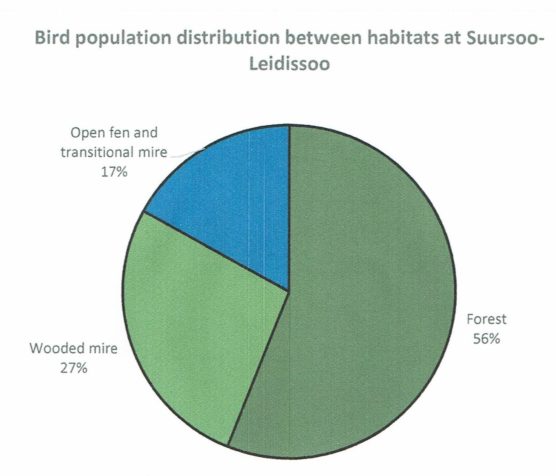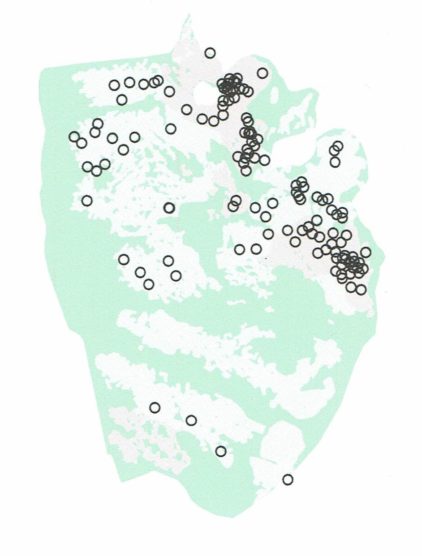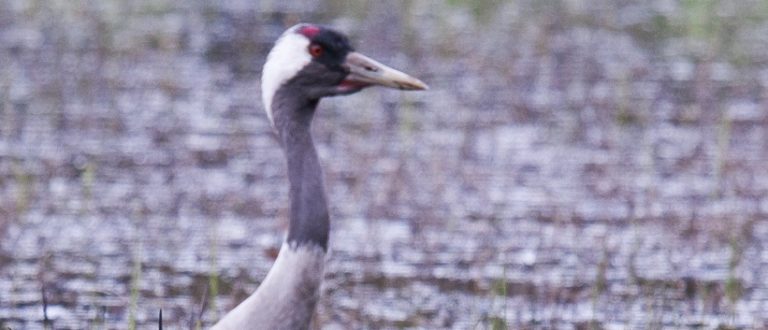The overall objective of the project Life Peat Restore is the reduction of the greenhouse gases emission of peatlands on the project sites. One of the aims of project is to contribute in significant way the halting the loss of biodiversity and degradation of ecosystem services.
Many specialized species inhabit natural peatlands, making them critical habitats for biodiversity conservation. They are the key habitats for many bird species, several of which are included in the Annex I of the European Commission Bird Directive. Several peatlands are listed internationally into Special Protection Areas.
Estonian project site belongs to the Suursoo-Leidissoo Special Protection Area (EE0040202) that has been formed to protect mire bird species golden eagle Aquila chrysaetos, black stork Ciconia nigra, montagu’s harrier Circus pygargus, merlin Falco columbarius, common crane Grus grus, red-backed shrike Lanius collurio, black grouse Tetrao tetrix, whimbre Numenius phaeopus and willow ptarmigan Lagopus lagopus. Most of these species need treeless fen habitat for breeding or for hunting.
Drainage of natural peatlands leads to afforestation, increase of tree height and reduces wetness (Laine et al. 1995). This leads to decline of peatland bird populations, especially passerines and waders. Study of the Northern European peatland bird population shows that peatland bird populations have undergone an overall decline of 40% in North Europe during 1981-2014 (Fraixedas et al. 2017).
Bird inventory was provided at Suursoo-Leidissoo project area in the 2nd and 3rd June, 2018 with the aim to recognize to which habitat types the nesting birds belong. The previously open fen area has been heavily owergrown with trees due to long lasting drainage.
Inventory was carried out by ornithologists Jaak Tammekänd, Meelis Leivits, Agu Leivits, Triin Leetmaa and Renno Nellis. The Estonian state mire habitat bird monitoring methodology was used /http://www.keskkonnaagentuur.ee/sites/default/files/seireproj_ankeet_haudelindude_kooslused_sood.docx/.

1629 pairs of nesting birds from 57 species were registered from the total monitored area (4247 ha). Most of them (83%) were identified on forested habitats (forest and wooded mire). 665 pairs of 44 bird species were nesting on open landscape habitats (2017 ha) but most of these were species typical for wooded sites, too. Only three species of waders were identified – common snipe Gallinago gallinago (six pairs), green sandpiper Tringa ochropus (three pairs) and Eurasian woodcock Scolopax rusticola (two pairs).

Circles on the map show the locations of nesting areas of typical fen birds, Light-coloured areas represent open landscapes (areas with no trees).
Typical fen species (common snipe Gallinago gallinago, Eurasian skylark Alauda arvensis, meadow pipit Anthus pratensis, reed bunting Emberiza schoeniclus, whinchat Saxicola rubetra) were mostly grouped into still preserved wet fen meadow (eastern part on the map) and to some wet places in the northeastern part of the area – the sites that were recently rewetted by beavers. Of the Bird Directive species one pair of montagu’s harrier Circus pygargus, six pairs of common crane Grus grus, nine pairs of red-backed shrike Lanius collurio and seven pairs of black grouse Tetrao tetrix were nesting.
It was concluded that the bird population on the open landscape is typical for heavily degraded fens and transitional mires. For birds preferring open mire habitats less than 10% of the total project area (340 ha) is still suitable.
Restoration of mire water level during the implementation of the Life Peat Restore project habitats for valuable mire birds will be improved.


